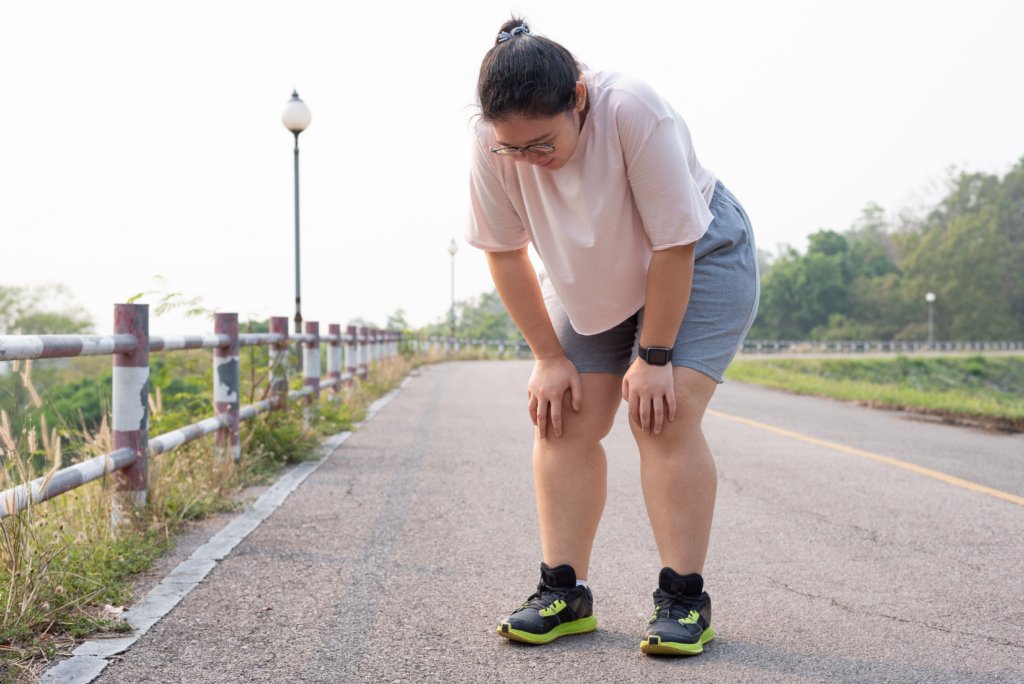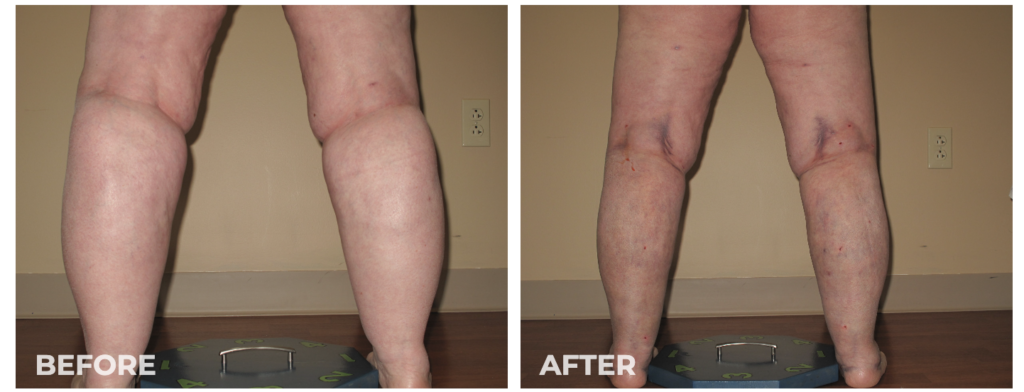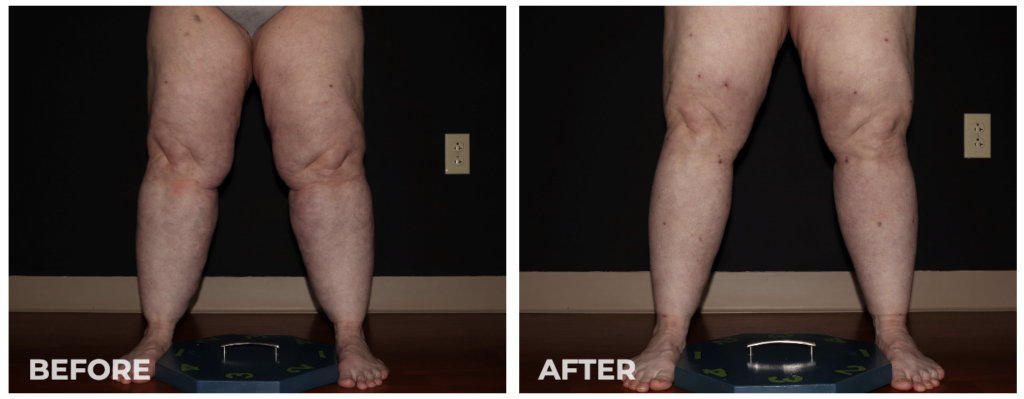

If you’re one of the millions of people living with lipedema, you know all too well the pain and discomfort of the condition. One of the most challenging aspects of lipedema is its effect on your knees, which can become swollen, painful, and difficult to move. But there is hope. Lipedema lipo is a safe, effective procedure that can help improve knee function and alleviate the symptoms of lipedema. By removing excess fat from the affected areas, this liposuction can reduce inflammation and pressure on the knees, allowing you to move more freely and with less pain. Best of all, the benefits of lipedema liposuction are long-lasting, giving you the relief you need to live your best life. So if you’re ready to discover the benefits of lipedema liposuction for improved knee function, read on to learn more!
What is Lipedema?
Lipedema is a fat disorder that mainly affects women and causes enlargement of both legs due to fat deposits under the skin. It’s characterized as a “progressive disorder,” meaning it worsens over time. In severe and more progressive cases, the trunk and upper body may also be affected, including the arms and upper back, and it’s often misdiagnosed and incorrectly treated as general obesity.
Lipedema is a disease that leads to the excessive buildup of fat cells, primarily in the arms and legs. Going far beyond the appearance of extra pounds, those who suffer from Lipedema often have large pockets of fat on their limbs that appear disproportionate compared to the rest of the body. Medical professionals often misdiagnose and dismiss lipedema as simple obesity, leaving affected women with an endless cycle of disappointment, frustration, and pain. Lipedema does not respond to a diet and exercise routine, yo-yo dieting, or juice cleanses.
Women suffering from Lipedema often report the disease associated with painful symptoms that trigger difficulties in dealing with everyday activities. Excessive swelling often comes with pain, numbness, and bruising. In its advanced stages, Lipedema can impact mobility and provoke vascular and lymphatic swelling, leading to further medical complications.
What is Lipedema Lipo?
Ultimately, effective treatment will require surgical intervention to alleviate the appearance and pain of symptoms. Liposuction performed on the affected limbs is generally the most effective treatment. Removing diseased fat deposits helps reduce swelling of the limbs and alleviates the pain that holds patients back from everyday activities.
This surgical treatment can provide various benefits and relieve the symptoms you are experiencing from lipedema. Dealing with lipedema can be difficult, especially if you are just now starting to take control of it.


Lipedema reduction surgery is different from cosmetic liposuction. Studies have shown that women with Lipedema have impaired lymphatic function. Lymphatic fluid promotes the growth of more fat cells, which can overwhelm the lymphatic capillaries (branch-like blood vessels). Extra care must be taken to avoid injuring the lymphatic system and worsening an already stressed system. Studies have shown that lymphatic function can improve after this type of liposuction in women with Lipedema using blunt cannulas, generous tumescent anesthesia and special surgical techniques. Lipedema reduction surgery aims to remove the fibrous tissue and maximally reduce the lipedema tissue. It is a “debulking” surgery, not a cosmetic surgery.
Why is Lymph Sparing Liposuction Preferred for Lipedema Patients?
1 – Lipedema Surgery Doesn’t Use General Anesthesia
One of the most beneficial aspects of lymph-sparing liposuction is that the treatment does not rely on general anesthesia. While general anesthesia is used for various treatments, it is generally not recommended for individuals with lipedema. Instead, lymph-sparing liposuction uses tumescent anesthesia to avoid these unwanted complications. General anesthesia can cause severe complications and even death in up to 0.3% of liposuction treatments. Relying on tumescent anesthesia ensures the anesthetic fluid has been distributed throughout the tissue and it has had time for all the fat tissue to gel. Patients are conscious for the duration of treatment, while the tumescent liquid acts as a local anesthetic to the treatment area. Patients may take pain pills ahead of time to help with discomfort and sometimes use laughing gas. However, through the process, patients feel little pain and, if anything, pressure in the area being treated.
2 – Lipedema Surgery Reduces Fat Tissue
Perhaps the most noticeable benefit to lymph-sparing liposuction is how it can reduce the amount of subcutaneous fat tissue in the body. Lipedema reduction surgery significantly reduces fat tissue and removes fibrous tissue, making the limbs lighter, smaller, less tender, and smoother. Following your physician’s guidelines is critical to reducing swelling and inflammation before the treatment. This is done by wearing compression garments and wraps and receiving manual lymph drainage for several weeks following lipedema surgery and beyond. Patients wear medical-grade compression clothing for at least eight weeks, and manual lymph drainage and massage are typically recommended as an ongoing and regular treatment.
Your tissue will be decongested, making your liposuction treatment as successful as possible. Some slight swelling and bruising may return immediately following the procedure, but this is expected and should subside over time. Some patients also report numbness as their nerves in the treated areas respond to treatment. Numbness may last for several months and up to one year, but compared to the reduction in fat tissue; patients still see this as a huge improvement. Compression is also critical to be maintained after the lipedema surgery, as the lymphatics are re-established. The lymphatic function is often improved.
3 – Lipedema Surgery Reduces Painful Symptoms
By reducing the amount of subcutaneous fat tissue, you can reduce any pain associated with lipedema. Lipedema reduction surgery, sometimes referred to as Lymph sparing liposuction, will help you increase mobility without having the pain you have been feeling with lipedema since it started. This is huge for women with lipedema, especially because the pain and bruising is the leading symptom of seeking treatment. Women report a significant improvement in their ability to move around more freely, exercise more regularly, and enjoy day-to-day activities that were previously off-limits. Bumping into a chair or a corner no longer causes large bruises, playing with the family dog doesn’t cause pain when they jump, and everyday activities are no longer considered out of reach.
How can Lipedema Liposuction Improve Knee Function?
The disproportionate fat accumulation in Lipedema causes mechanical imbalances that result in significant orthopedic problems. Knee joint degeneration is the most common arthritic condition of lipedema patients and is often disabling.


In our experience over the last five years, we’ve documented knee mechanics, including the range of motion, flection, gate, q-angle, and knee joint angulation (varus or valgus) in the joint. We found that lipedema reduction surgeries have improved knee flection by 8 degrees. That can make the difference between somebody climbing stairs, getting in and out of a tub, or getting in and out of chairs. This can be a huge difference! We’ve also seen about 8 degrees in valgus knee rotation, evening the pressure on the knee joint. As a result, this allows knee joints to last longer, avoiding arthritis that can result from rotation. Overall, 84% of patients who undergo lipedema reduction surgery over the 4-5 years had improvement in their gate and mobility leading to more accessible and enjoyable lives.
Frequently Asked Questions about Lipedema Liposuction
How long does lipedema liposuction take?
The procedure typically takes several hours to complete, depending on the extent of the lipedema.
Is lipedema liposuction painful?
Patients may experience some discomfort and swelling in the days following the procedure, but this can be managed with pain medication and other treatments.
How long does recovery take after lipedema liposuction?
Most patients can return to work and other activities within a week or two, although this may vary depending on the extent of the liposuction and individual healing rates.
Finding a Qualified Lipedema Liposuction Surgeon
If you are considering lipedema liposuction, finding a qualified and experienced surgeon specializing in this procedure is important. Look for a surgeon with a proven track record of success with lipedema patients and who prioritizes patient safety and comfort.
You can research surgeons online, read reviews from previous patients, and schedule consultations to discuss your options and ask any questions you may have. With the right surgeon, you can enjoy the benefits of lipedema liposuction for improved knee function and overall quality of life.
Conclusion
Living with lipedema can be a challenging experience, but there is hope. Lipedema liposuction is a safe and effective procedure that can help improve knee function and alleviate the symptoms of lipedema. Whether you are struggling with pain, swelling, stiffness, or reduced mobility, lipedema liposuction can provide a long-lasting solution that allows you to live your best life. To learn more about this procedure and whether it is right for you, consult a qualified lipedema liposuction surgeon today.




